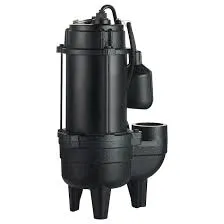English
- Afrikaans
- Albanian
- Amharic
- Arabic
- Armenian
- Azerbaijani
- Basque
- Belarusian
- Bengali
- Bosnian
- Bulgarian
- Catalan
- Cebuano
- Corsican
- Croatian
- Czech
- Danish
- Dutch
- English
- Esperanto
- Estonian
- Finnish
- French
- Frisian
- Galician
- Georgian
- German
- Greek
- Gujarati
- Haitian Creole
- hausa
- hawaiian
- Hebrew
- Hindi
- Miao
- Hungarian
- Icelandic
- igbo
- Indonesian
- irish
- Italian
- Japanese
- Javanese
- Kannada
- kazakh
- Khmer
- Rwandese
- Korean
- Kurdish
- Kyrgyz
- Lao
- Latin
- Latvian
- Lithuanian
- Luxembourgish
- Macedonian
- Malgashi
- Malay
- Malayalam
- Maltese
- Maori
- Marathi
- Mongolian
- Myanmar
- Nepali
- Norwegian
- Norwegian
- Occitan
- Pashto
- Persian
- Polish
- Portuguese
- Punjabi
- Romanian
- Russian
- Samoan
- Scottish Gaelic
- Serbian
- Sesotho
- Shona
- Sindhi
- Sinhala
- Slovak
- Slovenian
- Somali
- Spanish
- Sundanese
- Swahili
- Swedish
- Tagalog
- Tajik
- Tamil
- Tatar
- Telugu
- Thai
- Turkish
- Turkmen
- Ukrainian
- Urdu
- Uighur
- Uzbek
- Vietnamese
- Welsh
- Bantu
- Yiddish
- Yoruba
- Zulu
Telephone: +86 13120555503
Email: frank@cypump.com
Sep . 30, 2024 06:20 Back to list
Practical Methods for Pipeline Pumping and Compression System Optimization and Management
Pipeline Pumping and Compression Systems A Practical Approach
In the modern age, the transportation of fluids and gases is fundamental to various industries, from petroleum and natural gas to water supply and chemical processing. The effectiveness of this transportation system hinges significantly on the design and implementation of pipeline pumping and compression systems. This article delves into the practical aspects of these systems, exploring their components, operational principles, and importance in ensuring efficiency and reliability.
Understanding Pipeline Pumping Systems
Pumping systems are crucial for moving liquids through pipelines. They utilize various types of pumps, including centrifugal, positive displacement, and gear pumps, each suited for specific applications based on factors such as fluid properties, flow rates, and discharge pressures.
Centrifugal Pumps These are the most common type of pumps used in pipeline systems. They work by converting rotational energy, typically from an electric motor, into energy in a moving fluid. The primary advantage is their ability to handle large volumes of fluids at low pressures, making them ideal for petroleum and water transportation.
Positive Displacement Pumps These pumps are designed to move a specific volume of fluid with each cycle. They are advantageous for high viscosity fluids, making them suitable for applications like chemical transport and oil extraction.
Importance of Compression Systems
While pumping systems deal primarily with liquids, compression systems are vital for transporting gases, particularly in the natural gas industry. Compressors increase the pressure of gas, allowing it to flow through pipelines efficiently. The two predominant types of compressors used are reciprocating and rotary compressors.
Reciprocating Compressors These systems utilize pistons driven by a crankshaft to compress the gas
. They are often used for high-pressure applications and are known for their ability to handle varying gas compositions.Rotary Compressors This category includes screw and vane compressors, which are designed for high flow rates at lower pressures. They are commonly utilized in scenarios requiring continuous operation with minimal maintenance.
pipeline pumping and compression systems a practical approach

Factors to Consider in Pipeline Systems Design
The design and operation of pipeline pumping and compression systems must factor in several critical aspects to ensure efficiency, safety, and reliability
1. System Layout The physical layout plays a significant role in determining the overall effectiveness of the system. The distance between the source and destination, elevation changes, and the orientation of pumps and compressors can drastically influence operational efficiency.
2. Fluid Characteristics Understanding the physical and chemical properties of the fluids being transported is essential. Factors such as viscosity, density, and temperature can impact pump performance and efficiency, which must be carefully calculated during the design phase.
3. Economic Considerations The initial cost of equipment and installation must be balanced with operational expenses. Operators often conduct life-cycle cost analyses to determine the most cost-effective solutions without compromising performance.
4. Environmental Impact Modern regulations demand that pipeline systems minimize environmental impacts. This can include the use of spill prevention measures, emissions control for compressors, and advanced monitoring technologies to detect leaks.
5. Maintenance and Reliability Regular maintenance is crucial for ensuring the longevity and efficiency of pipeline systems. Incorporating predictive maintenance strategies, such as vibration analysis and thermal imaging, can help detect issues before they lead to costly downtime.
Conclusion
Pipeline pumping and compression systems are the lifeblood of fluid and gas transportation in numerous industries. A practical approach to these systems involves a comprehensive understanding of their components, operational principles, and the various factors influencing their performance. By optimizing system design, actively managing operational practices, and adhering to safety and environmental regulations, industries can ensure the efficient and reliable movement of essential resources. As technology continues to evolve, adopting innovative solutions in pipeline pumping and compression systems will become increasingly crucial in meeting the growing demands of global energy and resource management.
-
Custom Drilling Mud and Slurry Pump Supplier - High Efficiency, Tailored Solutions
NewsJun.10,2025
-
Supply Vertical Submersible Sewage Pump High-Efficiency WQ/QW Pumps Supplier
NewsJun.10,2025
-
Premium Sewage Ejection System & Pumps Efficient Waste Removal
NewsJun.09,2025
-
Premium Wholesale Slurry Pump Impellers Durable & Efficient Slurry Handling
NewsJun.09,2025
-
Top Sewage Pump Companies Durable Industrial Solutions for Efficiency
NewsJun.09,2025
-
Heavy Duty Slurry Pumps - OEM High Performance & Bulk Wholesale
NewsJun.09,2025










